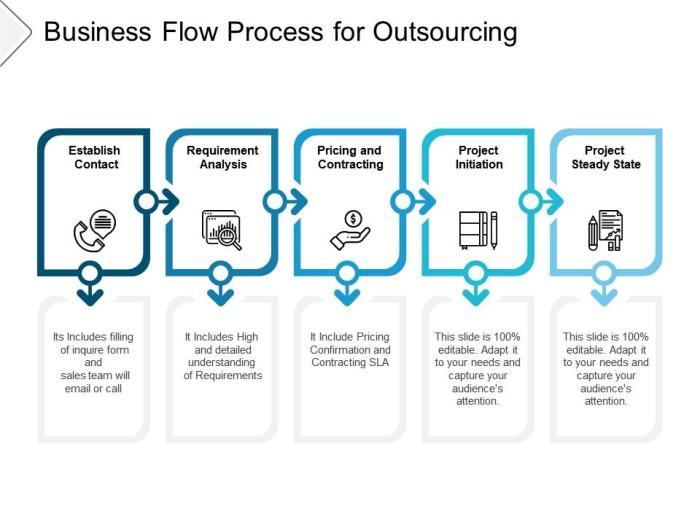BPO Customer Service: A Comprehensive Guide
Originally posted 2024-11-11 07:03:00.
BPO CUSTOMER SERVICE, the practice of outsourcing customer service operations, has become a vital strategy for businesses seeking to enhance efficiency, reduce costs, and improve customer satisfaction. This comprehensive guide explores the multifaceted world of BPO customer service, delving into its various models, benefits, challenges, and future trends.
From understanding the core concepts of BPO customer service to navigating its complexities, this exploration aims to provide a clear and insightful overview for businesses considering this strategic approach. We will examine the different types of BPO models, including inbound, outbound, and technical support, and discuss how they can be tailored to meet the unique needs of various industries.
BPO Customer Service

BPO customer service is a crucial aspect of modern business operations, encompassing the outsourcing of customer-related functions to third-party providers. This strategic approach enables companies to leverage specialized expertise and resources, enhance operational efficiency, and improve customer satisfaction.
Types of BPO Customer Service Models
Different types of BPO customer service models cater to diverse business needs and customer interactions. These models provide a comprehensive framework for managing customer relationships effectively.
- Inbound Customer Service: This model focuses on handling incoming customer inquiries and requests through various channels, including phone calls, emails, live chats, and social media. Inbound customer service representatives provide support, answer questions, resolve issues, and offer information to customers.
- Outbound Customer Service: Outbound customer service involves reaching out to customers proactively. This model encompasses activities like sales calls, customer surveys, market research, appointment scheduling, and account management. Outbound customer service representatives aim to build relationships, generate leads, and promote products or services.
- Technical Support: This specialized model provides assistance to customers facing technical issues with products or services. Technical support representatives possess technical expertise and troubleshooting skills to diagnose problems, offer solutions, and ensure customer satisfaction.
Industries Utilizing BPO Customer Service
BPO customer service is widely adopted across various industries, enabling companies to optimize customer experiences and achieve business goals.
- Telecommunications: Telecommunications companies rely heavily on BPO customer service to handle customer inquiries related to billing, technical support, and service upgrades.
- Financial Services: Financial institutions utilize BPO customer service for tasks like account management, loan processing, investment advice, and fraud prevention.
- Retail: Retailers leverage BPO customer service for order fulfillment, customer support, and returns processing, enhancing the overall shopping experience.
- Healthcare: Healthcare providers utilize BPO customer service for appointment scheduling, insurance verification, and patient billing, streamlining administrative processes.
- Travel and Hospitality: Travel and hospitality companies rely on BPO customer service for booking reservations, handling customer inquiries, and providing travel assistance.
Benefits of BPO Customer Service
Outsourcing customer service to a BPO (Business Process Outsourcing) provider can be a strategic decision that offers numerous benefits for businesses. By leveraging the expertise and resources of a specialized BPO partner, companies can enhance their customer service operations, improve customer satisfaction, and achieve significant cost savings.
Cost-Effectiveness of Outsourcing Customer Service
Outsourcing customer service to a BPO can be a cost-effective solution for businesses of all sizes. By leveraging the economies of scale offered by BPO providers, companies can significantly reduce their operational costs. BPO providers have access to a large pool of skilled customer service agents, allowing them to offer competitive pricing and optimize resource allocation.
- Lower labor costs:BPO providers often operate in countries with lower labor costs, which can translate into significant savings for businesses. For example, outsourcing customer service to the Philippines can reduce labor costs by up to 70% compared to hiring in-house agents in the United States.
- Reduced overhead costs:BPO providers handle all the administrative and infrastructure costs associated with running a customer service department, including office space, equipment, and IT support. This allows businesses to reduce their overhead costs and focus on their core competencies.
- Flexible staffing:BPO providers offer flexible staffing options, allowing businesses to scale their customer service operations up or down as needed. This flexibility can be particularly beneficial for businesses with seasonal or cyclical demand fluctuations.
Enhanced Customer Satisfaction and Loyalty
BPO providers are equipped with the latest technologies and tools to provide exceptional customer service experiences. By leveraging these resources, BPOs can help businesses enhance customer satisfaction and loyalty.
BPO customer service often involves managing a diverse range of inquiries, from technical support to account management. To streamline these processes, many BPOs utilize remote monitoring and management (RMM) tools like RMM REMOTE to remotely access and manage customer devices, ensuring faster resolution times and improved customer satisfaction.
This approach allows BPOs to deliver a consistent and efficient service experience, regardless of location.
- 24/7 customer support:BPO providers can offer 24/7 customer support, ensuring that customers can get assistance whenever they need it. This is particularly important for businesses with global operations or customers in different time zones.
- Multilingual support:BPO providers can offer multilingual support, allowing businesses to reach a wider customer base. This is essential for businesses that operate in multiple countries or serve a diverse customer base.
- Improved first-call resolution rates:BPO providers are trained to resolve customer issues quickly and efficiently, leading to higher first-call resolution rates. This reduces customer frustration and improves overall satisfaction.
Improved Efficiency and Scalability
BPO providers can help businesses improve their customer service efficiency and scalability by leveraging their expertise and resources.
- Streamlined processes:BPO providers have experience in streamlining customer service processes, which can lead to improved efficiency and faster resolution times.
- Advanced technology:BPO providers utilize advanced technology, such as CRM systems and automated chatbots, to improve efficiency and provide a more personalized customer experience.
- Scalability:BPO providers can quickly scale their operations up or down to meet changing business needs. This allows businesses to handle peak demand periods without having to hire additional staff.
Challenges of BPO Customer Service

Outsourcing customer service can bring numerous benefits, but it also comes with its own set of challenges. These challenges are often related to communication, data security, and managing remote teams.
Communication and Cultural Barriers
Effective communication is crucial for delivering exceptional customer service. When outsourcing customer service, language and cultural differences can pose significant challenges.
- Language barriers:Different languages and accents can lead to misunderstandings and misinterpretations. Customers may struggle to understand agents who speak with a different accent or use unfamiliar slang. This can result in frustration and dissatisfaction.
- Cultural differences:Cultural norms and expectations can vary significantly across regions. What is considered polite or appropriate in one culture might be offensive in another. For example, directness in communication is valued in some cultures, while others prefer a more indirect approach.
These differences can lead to misunderstandings and create friction in customer interactions.
- Time zone differences:When working with remote teams across different time zones, scheduling calls and meetings can be challenging. It can be difficult to find a time that works for everyone, which can lead to delays in communication and response times.
Data Security and Privacy
Data security and privacy are paramount concerns in BPO. Outsourcing customer service involves sharing sensitive customer information with third-party providers.
- Data breaches:BPO companies need to implement robust security measures to protect customer data from unauthorized access and breaches. Data breaches can have severe consequences, including financial losses, reputational damage, and legal penalties.
- Compliance with regulations:BPO companies must comply with data privacy regulations such as the General Data Protection Regulation (GDPR) and the California Consumer Privacy Act (CCPA). These regulations impose strict requirements on how personal data is collected, stored, and processed.
- Data leakage:There is always a risk of data leakage, especially when working with remote teams. Employees may accidentally share sensitive information or fall victim to phishing attacks. BPO companies need to implement rigorous security protocols and training programs to minimize the risk of data leakage.
Managing and Training Remote Teams
Managing and training remote teams effectively is a key challenge in BPO. Remote teams often face challenges with communication, collaboration, and motivation.
BPO customer service can be a powerful tool for small manufacturers, especially when paired with the right technology. Streamlining operations is key to success, and a well-chosen ERP system can be the difference maker. Finding the best fit for your specific needs is crucial, and we recommend checking out BEST ERP SYSTEMS FOR SMALL MANUFACTURING to explore your options.
By optimizing your processes, you can improve customer satisfaction and drive growth, ultimately leading to a more successful BPO customer service strategy.
- Communication challenges:Maintaining effective communication with remote teams can be difficult. Delays in response times, lack of face-to-face interaction, and difficulty in conveying non-verbal cues can hinder communication flow. BPO companies need to invest in communication tools and strategies to overcome these challenges.
- Collaboration issues:Remote teams may struggle to collaborate effectively, especially when working on complex projects. BPO companies need to implement tools and processes that facilitate collaboration and ensure that all team members are aligned on goals and objectives.
- Motivation and engagement:Motivating and engaging remote teams can be challenging. Employees may feel isolated and disconnected from the company culture. BPO companies need to create a positive and supportive work environment that fosters motivation and engagement.
Key Considerations for Successful BPO Customer Service

Partnering with a BPO provider can significantly enhance customer service operations, but navigating this partnership requires careful planning and execution. To ensure a successful BPO customer service strategy, businesses must consider several key factors.
Designing a Comprehensive Selection Process for BPO Providers
Choosing the right BPO provider is crucial for achieving desired outcomes. A thorough selection process helps identify providers that align with your business needs and goals.
BPO customer service teams often face challenges with accurate record-keeping and financial reporting. Integrating robust accounting software like MICROSOFT ACCOUNTING SOFTWARE can streamline these processes, providing real-time insights into financial performance and customer interactions. This not only enhances operational efficiency but also empowers customer service representatives with the necessary data to resolve queries effectively and build stronger customer relationships.
- Define Clear Requirements:Start by identifying your specific customer service needs, including service channels, target audience, language support, and desired performance metrics. This helps narrow down the pool of potential providers.
- Evaluate Provider Capabilities:Research potential providers’ experience, expertise, and industry specialization. Assess their technical infrastructure, customer service technologies, and training programs.
- Assess Cultural Fit:Consider the provider’s company culture and values to ensure alignment with your brand identity. Cultural compatibility promotes effective collaboration and communication.
- Conduct Due Diligence:Review the provider’s track record, client testimonials, and industry reputation. Check their security measures, compliance certifications, and data protection policies.
- Request Demonstrations:Request live demonstrations of the provider’s customer service platform and processes to evaluate their capabilities and technology.
- Negotiate Contracts:Carefully review and negotiate the contract terms, including pricing, service levels, performance metrics, and dispute resolution mechanisms.
Organizing a Clear Service Level Agreement (SLA)
A well-defined SLA Artikels the expectations, responsibilities, and performance standards for both parties. It provides a framework for accountability and ensures a successful partnership.
- Define Key Performance Indicators (KPIs):Clearly define the KPIs that will be used to measure the BPO provider’s performance. Examples include customer satisfaction scores, first call resolution rates, average handling time, and response times.
- Specify Service Levels:Artikel the specific service levels expected from the BPO provider, such as response times, availability hours, and service channel coverage.
- Establish Reporting and Monitoring:Define the reporting frequency and format for tracking performance against the agreed-upon KPIs. This ensures transparency and allows for timely adjustments.
- Address Dispute Resolution:Include a clear process for addressing disputes or disagreements that may arise during the partnership.
Creating a Robust Communication and Collaboration Framework
Effective communication and collaboration are essential for seamless integration and successful BPO customer service.
- Establish Communication Channels:Define the primary communication channels for day-to-day operations, including email, phone, instant messaging, and project management tools.
- Develop a Knowledge Sharing Platform:Create a centralized platform for sharing information, knowledge base articles, and training materials to ensure consistency in customer service practices.
- Schedule Regular Meetings:Conduct regular meetings with the BPO provider to discuss performance, address issues, and ensure alignment on strategic goals.
- Implement Feedback Mechanisms:Establish a feedback loop to gather insights from both customers and internal stakeholders to continuously improve customer service processes.
Trends in BPO Customer Service
The BPO customer service landscape is constantly evolving, driven by technological advancements, changing customer expectations, and the need for businesses to optimize their operations. Understanding these trends is crucial for BPO providers to remain competitive and deliver exceptional customer experiences.
BPO customer service thrives on efficiency and seamless processes. Integrating a robust ERP system like GENIUS ERP can streamline operations, automate tasks, and provide real-time insights into customer interactions, ultimately enhancing service quality and customer satisfaction.
Impact of Emerging Technologies, BPO CUSTOMER SERVICE
The emergence of artificial intelligence (AI) and automation is significantly impacting BPO customer service. These technologies are enabling BPO providers to automate routine tasks, improve efficiency, and enhance the customer experience.
- AI-powered chatbotsare becoming increasingly sophisticated, capable of handling basic customer inquiries and providing instant responses. This allows human agents to focus on more complex issues and provide personalized support.
- Robotic process automation (RPA)is automating repetitive tasks such as data entry, order processing, and billing, freeing up BPO agents to focus on value-added activities.
- Machine learning (ML)is used to analyze customer data and identify patterns, enabling BPO providers to personalize customer interactions and predict future needs.
Innovative Customer Service Strategies
BPO providers are adopting innovative strategies to enhance customer satisfaction and build loyalty. These strategies leverage technology and focus on creating seamless and personalized experiences.
- Omnichannel customer serviceprovides a consistent experience across all channels, including phone, email, chat, social media, and mobile apps. This ensures customers can interact with the BPO provider through their preferred channel and receive the same level of service regardless of the channel used.
- Proactive customer supportinvolves reaching out to customers before they have an issue, providing personalized recommendations, and addressing potential problems before they escalate. This can be achieved through AI-powered analytics that identify customer needs and predict potential issues.
- Customer self-service portalsempower customers to find answers to their questions and resolve issues independently. These portals often include FAQs, knowledge bases, and interactive tools, reducing the need for human intervention.
Future of BPO Customer Service
The future of BPO customer service is likely to be shaped by continued technological advancements and evolving customer expectations.
BPO customer service teams often rely on robust CRM systems like NetSuite to manage customer interactions and streamline processes. Finding the right NetSuite implementation partner is crucial for success, and you can explore some of the TOP NETSUITE IMPLEMENTATION PARTNERS to find the perfect fit for your BPO needs.
A strong partnership can help your BPO team optimize NetSuite’s features and ensure seamless integration with existing workflows, ultimately enhancing customer satisfaction and operational efficiency.
- Hyper-personalizationwill become increasingly important, with BPO providers leveraging data and AI to tailor interactions to individual customer preferences and needs.
- The rise of voice assistantswill further enhance customer self-service capabilities, allowing customers to interact with BPO providers through voice commands.
- The integration of augmented reality (AR) and virtual reality (VR)will provide immersive customer experiences, particularly in industries like retail and travel.
Final Wrap-Up
As the digital landscape continues to evolve at an unprecedented pace, BPO customer service is poised to play an even more critical role in shaping the future of business interactions. By embracing emerging technologies, adopting innovative strategies, and prioritizing customer-centric approaches, businesses can harness the full potential of BPO to create seamless, personalized, and truly exceptional customer experiences.
Q&A
What are the key benefits of using BPO for customer service?
BPO offers several advantages, including cost savings, improved customer satisfaction, increased efficiency, and access to specialized expertise.
How can I choose the right BPO provider for my business?
Consider factors like experience, industry expertise, technology capabilities, security measures, and pricing models when selecting a BPO provider.
What are the potential risks associated with BPO customer service?
Potential risks include communication barriers, data security concerns, and challenges in managing remote teams.